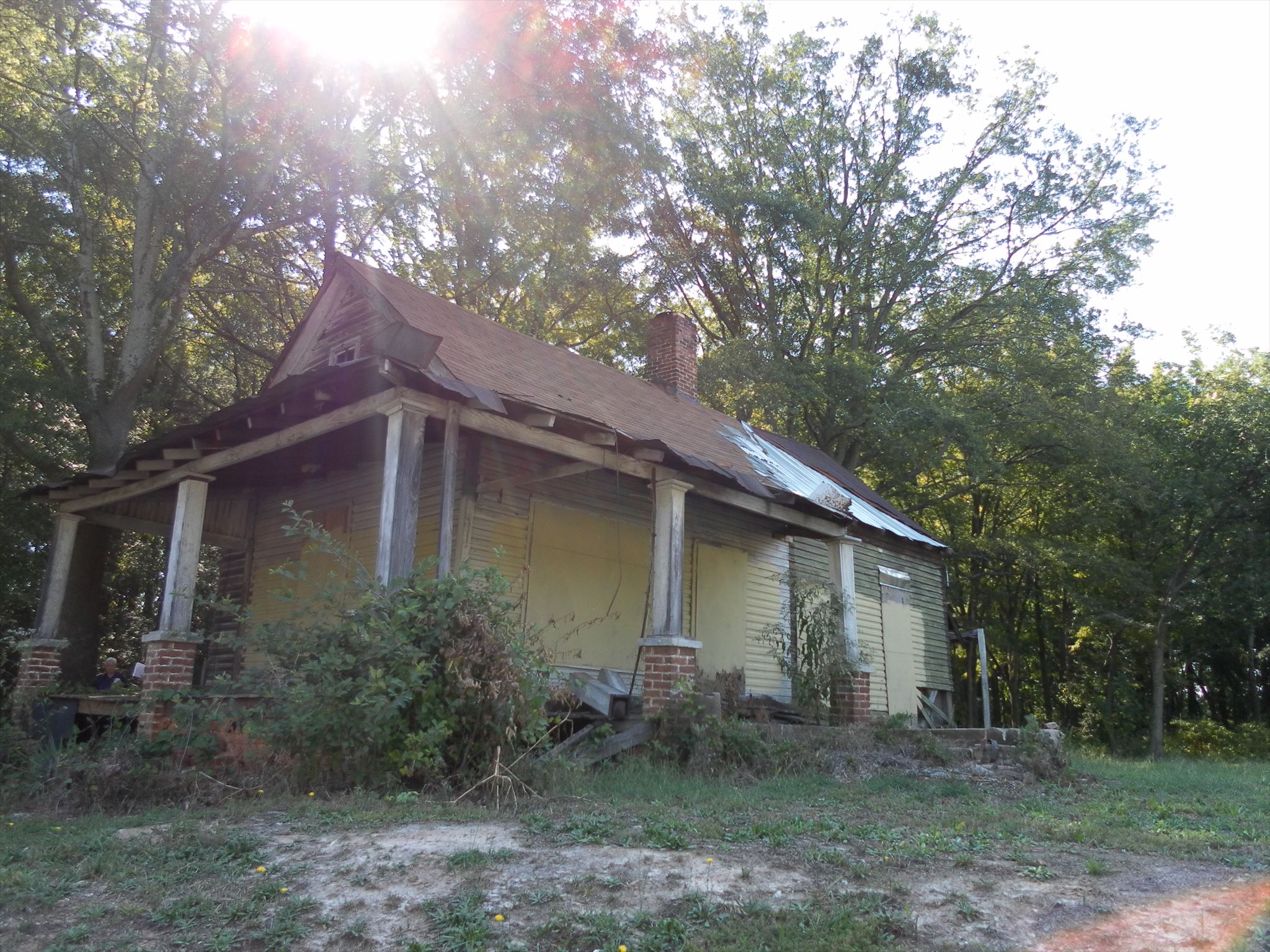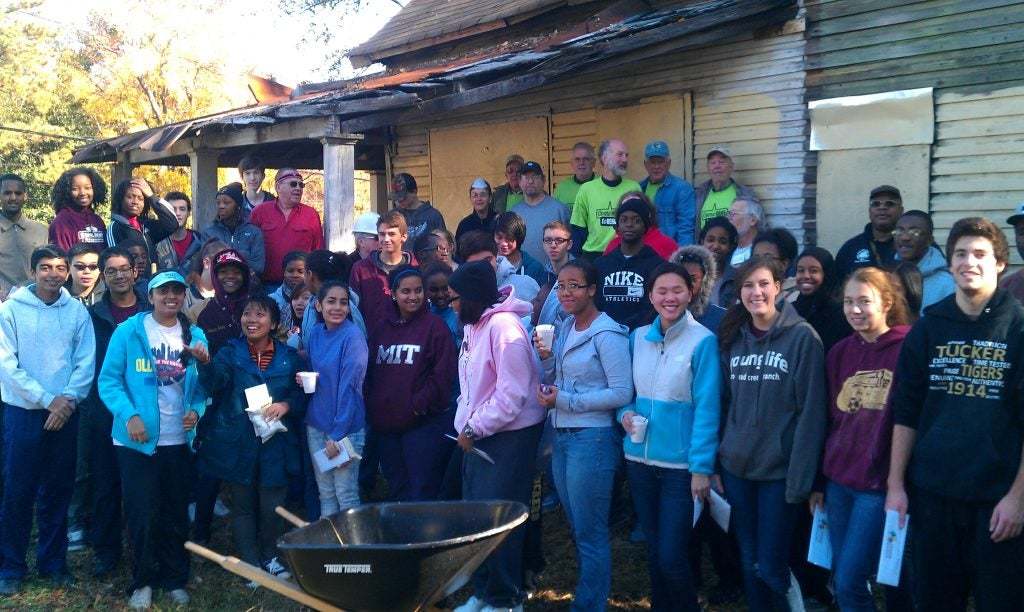CONGRATS TO TEAM SHURTLE FOR FTF!
This cache was originally created by RachekQuetzal, later adopted and maintained by Team Shurtle, and is now adopted and maintained by ckirbee. The cache itself is hidden in the wooded area near Johns Homestead just beyond the outbuildings. Parking is available within a short walking distance at the suggested waypoints. Please bring your own pen.
FRIENDS OF JOHNS HOMESTEAD PARK, who are dedicated to preserving, protecting, and improving Johns Homestead Park, welcome you!
Johns Homestead Park is a 50-acre green space located in Tucker, Georgia on Lawrenceville Highway. The park contains the historic Johns Homestead (ca. 1829) and outbuildings, as well as two scenic lakes known as the Twin Brothers Lakes.
The Land
Henry County, Georgia was created by the Georgia State Legislature in 1821 from land acquired from the Creek Indian Nation by the First Treaty of Indian Springs. In 1822, DeKalb County was formed from parts of Fayette, Gwinnett and Henry counties. The Pea Ridge area, where Johns Homestead Park is located, is included in the part of Henry County that became DeKalb County.
Courtesy of tuckerga.gov
Courtesy of Georgia Trust For Historic Preservation
John Johns, a Revolutionary War veteran living in Wilkes County with his wife Anne "Annie" Smith, won Land Lot 144, District 18 in the original land lottery that was held shortly after the Henry County’s creation. Sometime between 1821 and 1828, their son, John B. Johns Sr., purchased nearby lot 165 from a man named Reason Whitehead who had originally purchased it in the 1821 land lottery. This 202.5-acre tract was purchased from Mr. Whitehead for a reported $10 per acre. Sometime between 1829 and 1832, John B. Johns Sr. built the one-room, wooden frame house on land lot 165, facing Lawrenceville Highway. The Homestead is one of the oldest remaining houses in DeKalb County.
In 1854, John B. Johns, Sr. donated an acre of his land to build the community a schoolhouse, which was named the John B. Johns School in his honor. The Johns’ family assisted with the construction of the building (a log cabin). The school building, which was later renamed Rehoboth School, was also used as the first iteration of the Rehoboth Baptist Church. The church still has a copy of the original contract.
A sketch of J. B. Johns Schoolhouse around 1854 where Rehoboth Baptist Church started.
The Johns family also donated one acre of land for what is now the Rehoboth Cemetery. Many members of the family are buried there. Floral Hills Cemetery and several neighborhoods were also part of the family’s original acreage.
Photo courtesy of ckirbee
Rehoboth Cemetery with Johns Homestead in the background - April 2021
Many members of the Johns Family are buried at Rehoboth Cemetery.
Photo courtesy of OldBubba - February 2009
Grave of John B. Johns Sr. in Rehoboth Cemetery
Johns’ family descendants farmed the land until the 1980s. It is thought that the farm produced wheat, corn, and perhaps cotton. When the family vacated the house, it was one of the longest continually occupied structures in DeKalb County. Over the years, members of the Johns family have sold portions of their land, but descendants were in ownership of the house continuously until DeKalb County purchased the property in 2004. The remaining 23-acre property retains pieces of both of the original Johns Land Lots 144 and 165.
Homestead
The John B. Johns Homestead and site is made up of a main house and four outbuildings. The house was originally a side gable single pen cottage with an exterior chimney and an accessible attic, making it one and a half stories. John B. Johns, Sr. is said to have made the bricks for the original home himself from nearby clay, and fired them on the property. The same clay material was used to construct the dairy house outbuilding on the property. Soon after the house was built, an addition was added, making the house a saddlebag cottage. The original chimney is now in the center of the roof and shows where the original house ended.
Later, two additions were added on the front and back, resulting in two gabled ells. The front addition was damaged by a falling tree, and was subsequently demolished in 2008. The brick chimney from the front addition still remains intact. Because of its dilapidated state, the rear addition was demolished soon after.
The house is architecturally significant as an excellent and rare surviving example of a vernacular single pen turned saddlebag house. The saddlebag iteration of the house can be seen in the family photograph thought to be from the 1890s.
Johns Homestead in the 1890’s
Outbuildings
Behind the house are four typical late 19th century and early 20th century outbuildings: a well house, a dairy house, an equipment shed, and a potting shed. The outbuildings are architecturally significant as examples of rural building types on a farm homestead. The four outbuildings were not built at the same time as the main house, but were added over time as the property owners found them necessary. Although not original, the historic additions tell an interesting story about a typical rural farm homestead, and its owner’s changing needs over time.
The dairy building is historically significant. This building was constructed of rammed-earth, an ancient construction technique that became popular in the United States during the 1800s. A rammed earth wall is created by compressing a damp soil mixture into a wooden frame. Once the soil mixture reaches the desired height, the frame is removed and an earthen wall is left. Very few examples of vernacular rammed-earth buildings remain in Georgia, and Johns Homestead contains the only documented one in the state.
Photo courtesy of Halston Pitmann
The dairy at the site is the only documented example of the rammed-earth construction method in Georgia.
The Well House contains the original well dug by John B. Johns, Sr. The Equipment Shed is a typical shelter for a tractor and other small farming equipment not housed in a larger barn. A shed-roofed addition on the side of the equipment shed was used as a workshop. The Potting Shed is a small building that would have been used for potting plants and starting seedlings, similar to a greenhouse. The lower portion of the Potting Shed is made of rammed earth, a method of construction also visible in the Dairy House. The construction dates are unknown for the outbuildings, but construction techniques and details date them between 1880 and 1910. Some, particularly the dairy house, could be from an earlier date.
Places In Peril
The DeKalb County Natural Resource Management Office acquired the 23 acres of land in 2004. In 2006, the county purchased the adjoining Twin Brothers Lakes Property, making the park approximately 50 acres. The now 50-acre park has two lakes and wetlands teeming with wildlife. The lakes were originally built more than 70 years ago as a pay fishing lake. DeKalb County bought up the property all around the old Johns Homestead with the intention of establishing a nature preserve, hiking trails, and county historic education center. In regards to Johns Homestead, some demolition the county deemed necessary had taken place, and other historic structures remain in various states of disrepair. Budget cuts left the site largely neglected and unsecured, resulting in vandalism. The property has been added to the "Georgia Trust's Places in Peril list". The list is designed to raise awareness about significant historic, archaeological and cultural resources. This includes buildings and sites that are threatened by demolition, neglect, lack of maintenance, questionable development or public policies. The Georgia Trust uses the lists to encourage owners, individuals, organizations and communities to employ preservations tools, financial resources and partnerships in order to reclaim, restore and revitalize historic properties.
 |
Photo courtesy of Myke Johns/PBA - June 2012
Photo courtesy of Andrew Cauthen - September 2012
On the Slow Road to Recovery
Volunteers have pulled together on a few occasions to help with the property and the park. In 2012, close to 100 volunteers spent a day fixing the old homestead and cleaning up the surrounding property to support the revitalization of historic Johns Homestead Park. DeKalb County's Natural Resources Management Office brought heavy equipment, and Friends of Johns Homestead, Tucker Civic Association, and Tucker Historical Society brought volunteers and tools. Rehoboth Baptist Church let us use their parking lot and brought volunteers, coffee and homemade sweets to the cleanup. Two different Sherwin-Williams stores, one on Bancroft Circle in Tucker and the other on North Druid Hills Road in Decatur, donated exterior paint and painting supplies for the Homestead itself. Sams Club on Mountain Industrial Boulevard and Kroger on LaVista Road both supplied us breakfast treats to keep us all going. The Tucker High School Beta Club brought in close to 60 kids to help with the cleanup, removing massive amounts of Chinese privet, an invasive plant that's all around the homestead. County staff used a chipper to turn the privet into mulch to be used at a later cleanup. The homestead itself was cleared out and swept, weeds and debris removed from the edge and then a fresh coat of gray paint was used to even out the exterior color.
 |
Volunteers at Johns Homestead
Volunteers cleaning up Johns Homestead
Volunteers working on the house.
The house with a new coat of paint.
Johns Homestead
These days, Johns Homestead, sits at one of the trailheads of the Johns Homestead Park. Also located at this trailhead is a kiosk dedicated to John Johns, the American Revolutionary War Soldier. On one side of the kiosk, you can find information and a map for Johns Homestead Park. On the other side, you can find detailed history about Johns Homestead which is now gated.
Photo courtesy of ckirbee - April 2021
Photo courtesy of ckirbee - April 2021
Photo courtesy of ckirbee - April 2021
Addition information on the area:
Johns Homestead History
Friends of Johns Homestead Park
Johns Homestead Press and Media
Historic Johns Homestead Gets Some Attention
History at Risk - Johns Homestead
Our Story - Rehoboth Church Family
Historical Preservation - Johns Homestead
ATLNature - Johns Homestead
Places In Peril
Johns Homestead: On the Slow Road to Recovery
Rehoboth Cemetery
John Bolin Johns Sr. memorial
Special thanks to Christy R. Atkins, Tres Crow and countless others for providing historical info shared on this page. A huge thank you to the volunteers for their time continuously fixing up the area and preserving the area.
More caches that will have you exploring the park and the cemetery:
Pete the Python, Pete's Friend Timmy, Suiker Koekje, The Talton Family, Till Death Do Us Cache